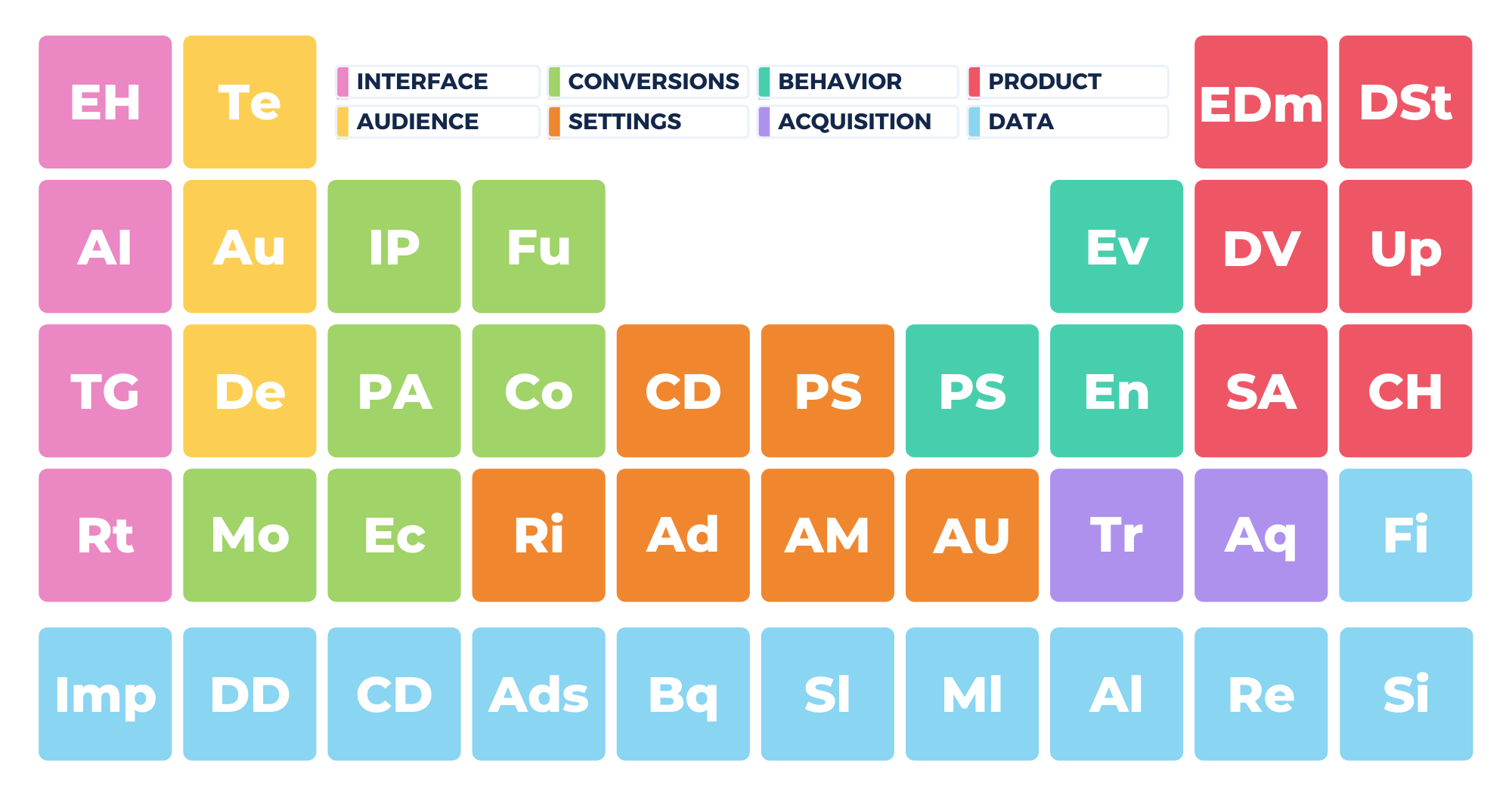
DEMOGRAPHICS
Get to know your visitors better while respecting privacy

Today, we talk about the demographics report in Google Analytics.
Category
AUDIENCE: The audience reports help us understand trends about our website visitors. Our web browser tells a lot about us, so website owners know your location, Internet service provider, and more.
But the problem is that these reports don’t change very often. Trends are often measured for months, and not days.
Element
DEMOGRAPHICS: Get to know your visitors better
The demographics report in Google Analytics is quite accessible to everyone. But do note that your location and cookies used may affect the results.
By enabling the demographics report, you'll be able to see the age group and gender of your visitors.
Age: The age distribution is categorized by a 10-years range, starting at age 18
Gender: Male and Female
Skill level
Intermediate
Pro tip
When you enable the demographics report in Google Analytics, do update the privacy policy on your website to indicate that personal identifiable information will be collected.
How-to
In order to generate data, you'll first need to enable the Demographics Reports:
- Click on Admin tab
- Click on Property Settings
- Under Enable Demographics and Interest Reports, choose On
To view the data on Demographics Reports:
- Click on Reporting tab
- Click on Audience > Demographics
On the overview page, to navigate:
You can click on different metrics to view how it differs across the age and gender groups.
On both the age and gender pages:
You'll see the stack chart of the dates against the selected metric. You can even compare two metrics. There is data on how well each group does in the goal(s) you've set up on the account.
What’s New in Google Analytics 4?
Just like in Universal Analytics, you have to enable Analytics to start collecting demographics data. In GA4, this means enabling Google signals.
To enable Google signals, follow these steps:
1. Go to “Admin,” and click “Setup assistant” under “Property.”
2. Click “Activate Google signals.”

3. Toggle the switch at the top and acknowledge user data collection.

You’ll also need to select the appropriate reporting identity to collect accurate demographics data. Our recommendation is to select the “By User-ID, Google Signals, then Device” reporting identity option.
This is the more comprehensive of the two options. It tells Google to move through the various identifiers and use the best one for your data collection. Analytics will first look for a user ID. This is the most accurate way to track users when available. If they haven’t been authenticated, Analytics will look for Google signals data. If the user hasn’t permitted Ads Personalization, Analytics will then use device ID.
To select your reporting identity, follow these steps:
1. Click “Admin” on the bottom left.
2. Under “Property,” click “Default reporting identity.”

3. Select between “By user-ID, Google signals, then device” or “By device only.”

Also, note that if you’re using the “By user-ID, Google signals, then device” option as we recommend, you have to set up a custom dimension in your GA4 property. To do so, follow these steps:
1. Click “Custom definitions” on the bottom left.

2. Click “Create custom dimensions.” You’ll see a window open on the right.
3. Enter “user_id” for the dimension name and set the scope to “User.”

4. Click “Save” (top right).
As far as the layout of your demographics report, there have been some updates in GA4. In Universal Analytics, your demographics report had three tabs: overview, age, and gender. In GA4, this has changed to be more streamlined and user-friendly, like everything in the new platform. Now you’ll notice the demographics tab only has two sections: overview and demographic details.
The overview section gives you a snapshot of all your important demographic metrics, like age and location. You can click on the bottom of any of the charts to see more information.

When you go to your demographic details section, there you have your familiar interactive chart. But remember that there have been some changes to data collection in GA4, so now you’re looking at metrics that primarily focus on engagement. This gives you more insight into your user activity than old metrics like bounce rate.
To customize this chart, just add the “+” sign, and you’ll be able to see any event or metric you want to analyze.

And don’t forget, just like all the reports in GA4, you can set up comparisons at the top of the report to look at demographics data in detail and compare segments side-by-side.
